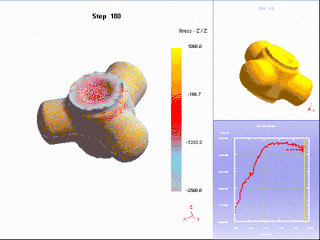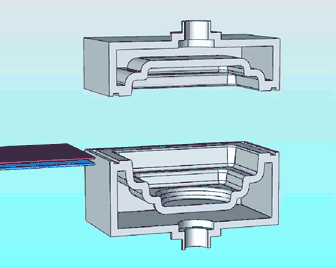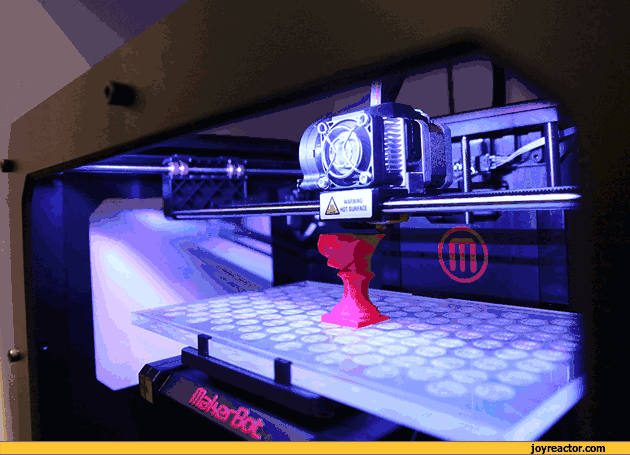Plastic products are used widely in our daily life. However, do you know how plastic are formed? In this passage, let’s learn about it together.
Injection Molding
It is a method to mold industrial products, including rubber injection and plastic injection. Injection molding can also be classified into injecting moulding and pressure casting. Injection molding machine (injection machine for short) can form thermal plastics or thermosetting plastics into plastic products of all shapes with a plastic forming mold. Therefore, injection molding is mainly achieved by injection molding machine and its molds.

Extrusion
Materials, extruded by extrusion machine and augers, is heated and plasticized as it is pushed toward by augers. Its continuously passing through machine can lead to the forming of all kinds of section products or semi-finished products.

Rotary Forming
It is also called rotational molding, rotomolding, spin casting, etc.. At first, proper volume of plastic (in liquid or powder) is added into molds.then the molds are closed and rotates along the two axis which are vertical to each other. Meanwhile, they are heated. Then plastic materials are melted and distributed inside the mold under the force of gravity and thermal energy. The formed plastic has the same shape with the mold. After cool shaping and demolding, the final products are produced.

Blow Molding
It is also known as hollow blow molding, which is a rapidly developing plastic processing method. Thermoplastic resin are extruded or injection formed for tube plastic billet which is then heated and softened and put into split cavity. Afterwards, compressed air is filled. The billet is inflated and stick to internal wall of mold. After cooling and demolding, hollow plastic products can be made.

Plastic vacuum forming
Blister is another plastic processing technique. Its main principle is as follows: Flat plastic sheet is heated, softened, absorbed to mold surface by vacuum, cooled and formed at last. It is a technology used in many fields. Blisters are so formed on our blister packing machine.

Compression Molding
It is also named compression forming. At the beginning, powdery, granular or fiber plastic is put into molding chamber, which is under forming temperature. Then the mold is closed and pressurized. Therefore, the heated plastic can be shaped and solidified. This method is applicable for thermosetting plastic, thermal plastic and rubber.

Roller forming
Melting thermal plastic is filled into the gap between more than two parallel rollers rotating in different directions. It is then compressed and extended to continuous sheet of certain specifications and compliance with quality standards. At last, it s naturally cooled and shaped. This technique is commonly used in production of plastic film or sheet.

Foam Molding
If appropriate foaming agent is added into foaming materials such as PVC, PE and PS, etc., micropores will appear. This process is named foaming molding. Almost all thermosetting and thermal plastic can be produced to foam plastic. Therefore, this technique has become an key field in plastic processing.

Winding
During production, continuous fiber (or tape, yarn) soaked with resin are wound on the core mold according to certain rules. After solidifying and demolding, the end products are made.

Lamination
Its a processing technique in which multi-layer identical or different materials are laminated to one layer by heating or pressurizing. It is always applied to process plastics and rubber.

Coating molding
This process coats plastic sol or organic sol on cloth, paper or other substrates to produce leather, varnished cloth or plastic wallpaper. Or powdery plastic can also be coated on metal surface. Common plastic coating products are artificial leather, varnished cloth, plastic wallpaper and metal coating products.
Casting
Previous casting technique applied mold in which materials are filled, agglomerated, solidified and shaped to the product of the same shape with the mold. 1960s saw the appearance of nylon monomer and polyamide casting. As the technology develops, traditional casting notion changes a lot. Polymer solution, PVC paste or solution can also be cast and shaped.

Dripping
This technology makes use of changeable status of thermal plastic polymer materials. They are liquid in certain condition and turn solid in normal temperature. If proper methods and specific tools are used to jet ink, these materials can be shaped in liquid according to requirements and then solidify and shape in normal temperature.

Cold Pressing
It is a kind of compression molding. Different from normal compression molding, cold pressing pressurize plastic materials in normal temperature. Demolded plastic products are then aged by heating or through chemical functions.

Compression shaping
It is mainly used for production of thermosetting plastic. By heating, melting, pressurizing, and demolding, finish products are made.

Resin Transfer Molding
During production, resin is filled into a closed mold to soak materials and solidify. No pre-soaking material or autoclave is needed so that cost can be effectively cut. This technique develops rapidly in fields of aircraft, automobile and ship. It has been developed into multiple branches, including RFI, VARTM, SCRIMP, SPRINT, etc. to meet requirements of different industries.

Pressing
Punch or terrace die presses materials in die to generate plastic fluidity. Therefore, products of the same shape with molds are produced. During pressing, materials will generate forces toward three directions. Even materials of low plasticity can be pressed and shaped.

Heat Forming
This method is special to process thermal plastic sheet into all kinds of products. The sheets are clipped by frames, heated and softened. Due to external force, the sheet will cling to mold wall and obtains the same shape with the mold. After cold shaping and modification, end products are made.

Slush molding
Slush molding refers to the processing technique to produce hollow soft products (such as toys) with plastic paste. At first, plastic paste (plastic sol) is poured into mold (die or cavity block) which has been preheated to certain temperature. The paste close to inner chamber wall will be heated and gelatinized. Then plastic paste without gelatinizing is poured out. Paste clinging to mold wall is heated (melted) and then cooled. The products taken out from mold at last are hollow.

3D Printing
3D Printing is a way for quick shaping. Based on digital mold, powdery metal or plastic and other adhesive materials are used to construct products by printing layer by layer. 3DP is realized by digital printing machine, which is widely used in mold production and industrial design and other fields to produce molds. Then it is used to produce products directly gradually and now some parts are produced through it.
Common 3D Printing materials are nylon fiberglass, PLA, ABS resin, durable nylon material, gypsum, alu, titanium alloy, stainless steel, silver plate, gilt and rubber.

(pictures above come from the Internet)

 English
English




















